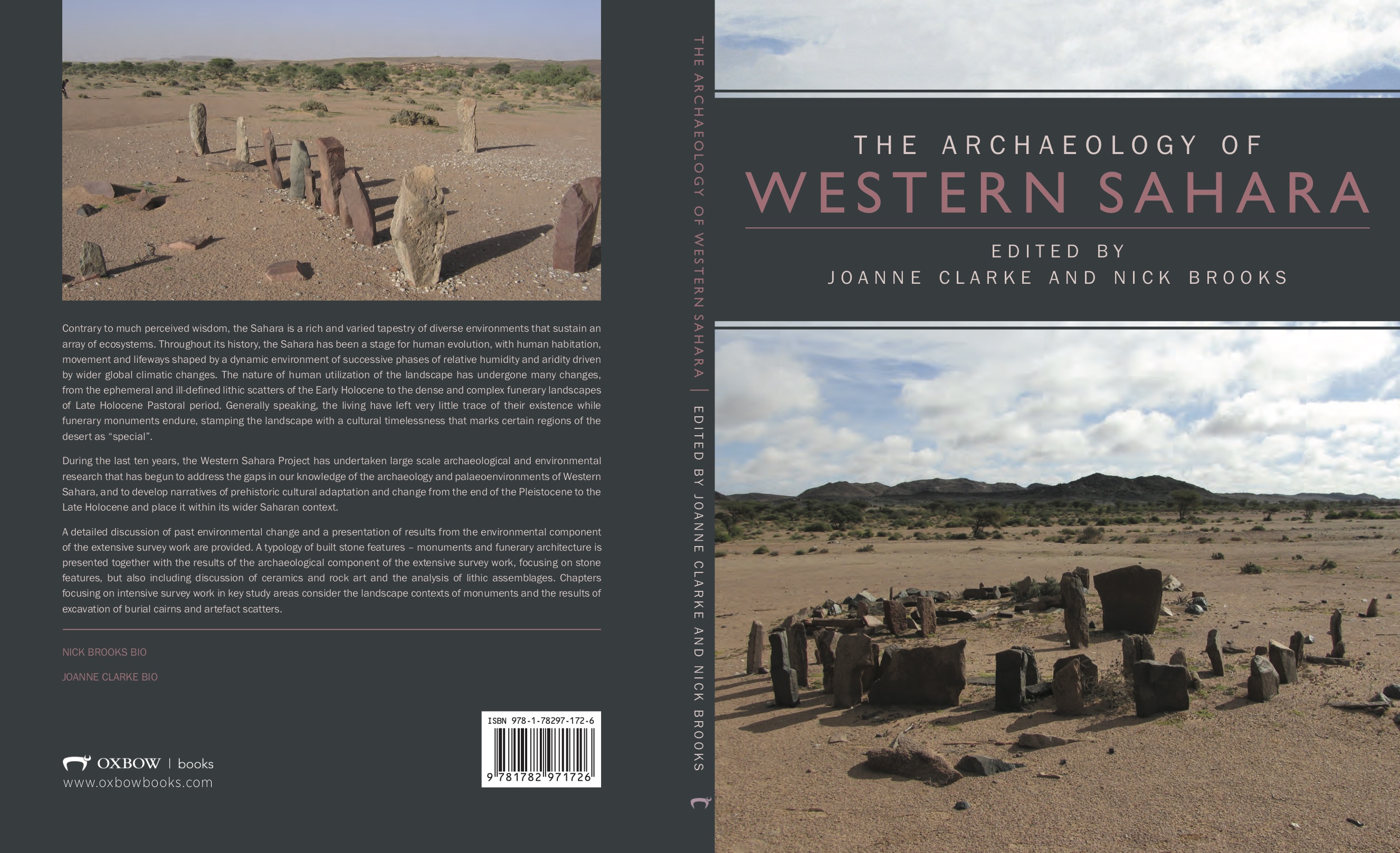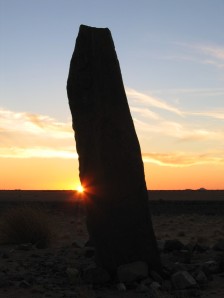Listen to me talk to Asria Mohamed Taleb on this episode of her Sandfast podcast, which addresses all things Western Saharan and Sahrawi. In this episode we talk about the archaeological record in Western Sahara, how it relates to past climate change and the desiccation of the Sahara, monumental funerary structures and cattle pastoralism, contemporary climate change, and threats to archaeological heritage.
This episode was recorded late at night during COP26, after we had launched the first Sahrawi indicative Nationally Determined Contribution (national climate change plan) with colleagues from the Sahrawi government and UK supporters (see this blog post about the NDC and the issues it addresses, including climate justice and climate colonialism – honestly, it’s more interesting than it sounds!).
Partly due to the late hour, it takes me far too long to specify which period I’m talking about – broadly speaking, the discussion is focussing on the archaeological record and changes in climate representing the period from around 5000 BCE onwards. We don’t know when pastoralism arrived in Western Sahara, but we can probably safely say it was some time after around 4000 BCE, and perhaps quite a bit later.
Another slight correction – when I mention the earliest burials in the Sahara, I’m referring to the earliest burials associated with monumental stone strcutures. Before these monuments spread across the Sahara, people were burying their dead, but were not marking the burials, at least in a way that has persisted into the modern period.


